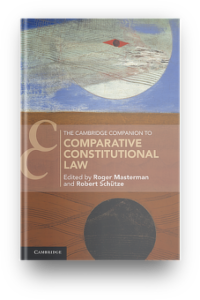The term ‘federalism’ refers both to a plurality of historical experiences, and features both a static- structural and a dynamic- procedural dimension. The first dimension refers to the concrete organizational forms assumed by federalism (such as in the United States or India); the second dimension, on the other hand, concerns federal processes, that is to say the historical evolution and the progressive development of a union between several communities (for example, the European Union or the United Provinces of the Netherlands in the modern era).
The first structural dimension studies federalism mostly as a juridicalconstitutional organization and traditionally belongs to legal studies, while the second dimension is a form of reaction to the predominance of the juridical approach. Friedrich, who was the main theorist supporting this political science approach, believes that the word federalism concerns:
the process of federalizing a political community, that is to say, the process by which a number of separate political communities enter into arrangements for working out solutions, adopting joint policies, and making joint decisions on joint problems, and, conversely, also the process by which a unitary political community becomes differentiated into a federally organized whole. Federal relations are fluctuating relations in the very nature of things. 1
In these pages, I will try to merge the two approaches following Elazar’s suggestion, according to which ‘federalism must combine both structure and process’, because ‘[t]hat combination, indeed, is what creates a federal system’. 2
A semantic clarification is also important at the outset. The concepts of federalism and federal state are often used in an undifferentiated manner. Here, the concept of federal state (Bundesstaat, Federation) will be used to indicate a certain type of legal system, characterized by a particular territorial organization. The concept of federalism (Föderalismus, federalism), on the other hand, will be used to indicate a concept often coinciding with the federal state, not in its legal- organizational dimension, but rather in the dynamics of different processes such as the creation, change and dissolution of federal experiences. 3
Finally, a brief warning. A few ‘classic’ examples will inevitably need to be highlighted. These are the federal states that arose between the eighteenth and nineteenth centuries, namely the United States, Switzerland, Australia, Canada, Germany and Austria (the latter formed in 1919– 1920), since they became reference models for every subsequent historical experience. These concrete historical forms of federalism tend to have common features because they were formed through association in a single and comprehensive state entity composed of preexisting smaller entities ( coming-together federalism ). They are opposed to most recent federal formations, created through processes of disintegration of preexisting state units ( holding together federalism ). 4 After examining the specificities related to the study of the federal phenomenon, represented in the first part of this chapter, the analysis will focus on the current reasons for federalism and the federal state. In the central part of this analysis, the features characterizing the federal state will be identified in order to reaffirm the long- lasting usefulness of some legal categories for the understanding of the concept of federal state. The final part will try to clarify the reasons for a renewal under the common unitary state category, composed of the experiences of ‘classic’ federal states, more recently formed unions and the so- called ‘Regional states’.
1 C.J. Friedrich , Trends of Federalism in Theory and Practice (Pall Mall Press, 1968) 7 .
2 D.J. Elazar , Exploring Federalism (The University of Alabama Press, 1987) 68 .
3 M. Burgess , ‘Federalism and Federation in Western Europe ’, in M. Burgess (ed.), Federalism
and Federation in Western Europe (Croom, 1986) .
4 The terminological distinction between ‘coming together’ federalism, i.e. by association,
and ‘holding together’ federalisms, i.e. by dissociation, belongs to A. Stepan , Toward a
New Comparative Politics of Federalism, (Multi) Nationalism, and Democracy: Beyond
Riker Federalism , in A. Stepan (ed.), Arguing Comparative Politics (Oxford University
Press, 2001), 315 ss., who used it to mark a clear difference between the two types of
federalism and, above all, to emphasize the asymmetries characterizing ‘holding together’
federalisms.
